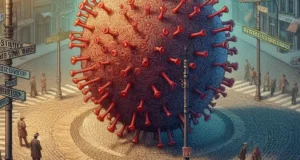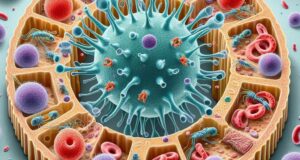Imagine standing in a battlefield, surrounded by an invisible enemy. People are falling, one by one, and there’s no armor, no weapon, no defense. Then one day, someone hands you a shield. It’s not perfect, but it’s the first thing you can hold up and say: “We can fight back.” That shield was AZT (zidovudine)—the first drug ever approved to treat

As the world scrambled to understand AIDS, where did it come from, people were dying fast. There were no treatments. No roadmap. Only fear and funerals. Doctors watched helplessly, and patients counted weeks, not months.
Enter AZT. Originally developed in the 1960s as a potential cancer drug—and shelved because it wasn’t effective for that purpose—AZT was rediscovered in the mid-1980s when scientists began screening old compounds

Without this step, the virus can’t replicate inside the body’s immune cells. In simple terms, AZT acted like jamming a copier machine: HIV couldn’t multiply, and that gave the immune system a fighting chance.
. It was a historical moment. For the first time, people living with AIDS had a medicine that could slow down the virus. It didn’t cure HIV, and it had serious side effects, but it was a turning point.
It was also a symbolic answer to the haunting question: AIDS, where did it come from—and what can we do about it?
While scientists like Luc Montagnier and Robert Gallo helped identify the virus behind AIDS, AZT was the first practical response—a tool that turned helplessness into action. It marked the shift from watching the epidemic unfold to actively treating it.
AZT’s arrival was dramatic. It offered hope, but also sparked controversy. The drug was extremely expensive—costing over $10,000 per year at the time—and inaccessible to many who needed it most. Activist groups like ACT UP protested, demanding lower prices, more drug trials, and faster access to treatments. These protests shaped the future of HIV care and drug approval policy.
AZT wasn’t perfect. Its early dosages were too high, causing toxicity. It couldn’t eliminate the virus, and over time, HIV developed resistance to it. But it opened the door to combination therapy, where AZT was used alongside other antiretroviral drugs. This led to the creation of HAART (Highly Active Antiretroviral Therapy) in the mid-1990s, which dramatically reduced AIDS-related deaths.
Today, AZT is rarely used on its own, but it remains a part of combination treatments in some cases. More importantly, its legacy endures. It was the first domino, the one that started the chain reaction toward survival, management, and hope.
So when the question is asked—“AIDS, where did it come from?”—AZT may not answer the origin story, but it answered the next chapter: “Where do we go from here?”
It transformed AIDS from an unstoppable force into a battle that could be fought. AZT proved that science could respond, that treatment was possible, and that the tide could turn.
And though the road was hard, AZT helped make it visible.




